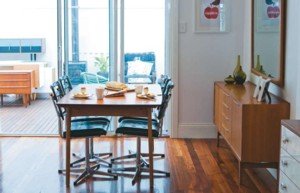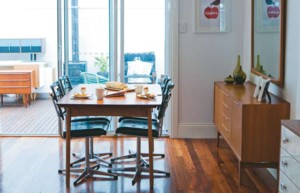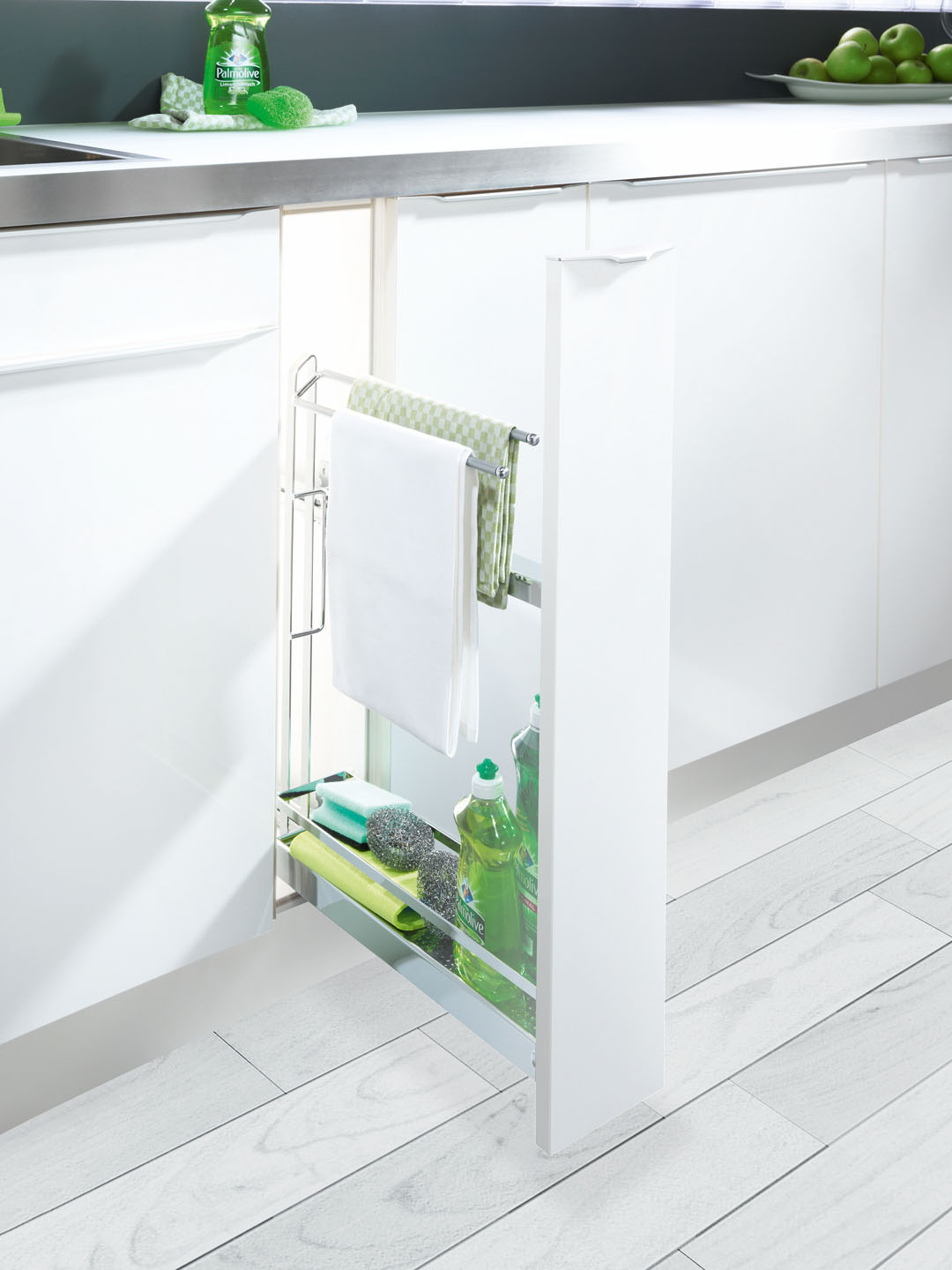In the stylish and sustainable home of a young Adelaide couple whose love of the design ethic of the 1960s and ‘70s and a desire to minimise their eco-footprint has shaped their work and lifestyle

Necessity mothered invention when photographic assistant Monique Boseley and her shipwright partner, Charlie O’Donovan, moved into their 1950s’ cottage in the Adelaide Hills. As new homeowners recently returned from several years living and working in the UK they were strapped for cash so looked to op shops and second-hand barns for furniture for their house. It was then a simple matter of combining Monique’s love of retro design with Charlie’s handyman and restoration skills to give their pre-loved furniture finds a new lease on life.
Their friends were so impressed with the results that Monique and Charlie were encouraged to turn their hobby into a business and two years ago they started Retromodern, an online furniture showroom that specialises in mid-20th century sideboards, chests of drawers, tables and decorator items such as anodised drinkware, Planet lamps and West German pottery vases. It helped that both had a fascination for the minimalist lines of the period and a desire to tread as lightly as possible on the earth. “All our furniture is recycled from original pieces,” Monique says. “By restoring used furniture we are offering a greener alternative to mass-produced pieces. We’re saving trees and reducing landfill caused by dumping old furniture.”
By sourcing their stock from charities, churches and community markets, Charlie and Monique are able to find quality pieces of furniture, which have already stood the test of time as they have been in use for 50 or 60 years. “We look for brands such as Parker, Noblett, G-Plan and a local Adelaide company, TH Brown,” Monique explains. “It’s good solid furniture and epitomises everything that was good about the approach to contemporary furniture in that period.”
Monique adds that a post-war yearning for a fresh start and a splurge after years of rationing lead to the contemporary style of the ‘50s. People loved bold patterns for wallpapers and fabrics, but went for elegant, modern furniture that floated magically above the floor on slender legs. The ‘60s produced a diverse range of styles, from country cottage pine to blow-up chairs. What we now know as the classic retro furniture look is typified by long, low, teak sideboards and coffee tables. This was a style epitomised by the English firm E Gomme’s GPlan range. At the same time Scandinavian furniture design was having a big influence in both the UK and the US. The combination of highly skilled craftsmanship with modern design captured the mood of the time. The Scandinavian moulded teak and rosewood furniture set the standard and was imitated around the world. Monique says Retromodern clients range from 30-somethings “who just love the look” to older people who have holiday and beach houses that were built in the period and want to decorate them accordingly. “It’s funny that it’s a style that polarises opinion,” she says. “People tend to love it or hate it; there’s not much middle ground.”
When it comes to his restoration work Charlie avoids harsh chemicals and prefers to use orange-oil products, bees wax and a lemon and paraffin oil substitute for mineral turpentine as a thinner and cleaner. He also sources many of the materials he uses from waste or scrap discarded by larger manufacturing companies. At home, the couple translates their “reduce and recycle” mantra into a clean, green philosophy by using natural cleaning products, composting kitchen waste and buying only products with minimal packaging. “It’s not hard to incorporate small changes into your lifestyle,” Monique says. “They cost nothing and can add up to a significant reduction in the impact you have on the planet.” Other initiatives, such as their decision to switch to Green Power come with a price tag, but one that Monique and Charlie are happy to pay. They are also hoping to install a greywater recycling system to provide water for the garden in the near future. Already they’ve reduced water consumption by planting mainly natives. Fruit trees and a vegie garden help reduce their weekly food bill and Monique prefers to use organic produce, where possible, particularly when the baby they are expecting arrives.
Although the cottage itself was built long before anyone had heard of sustainable design, Monique says it is well oriented on the block to capture winter sun and avoid the summer extremes. “The farmer who built the house also planted lots of deciduous trees which completely shade the house in summer,” she says. “The trees shed in winter when you want the sun to penetrate, but it’s genius in summer because, in spite of the frequent high temperatures, we rarely need to use air conditioning. I think we only ran it one day last summer and that was a particularly harsh one.” Monique and Charlie use their home as a showroom for their furniture, so they can photograph it in situ and give clients a better idea of how it will look in their own homes. “It means that our house is constantly changing as we sell pieces and move new ones in,” she says. “But there’s one piece that will leave and that’s the long line sideboard we use as the Retromodern signature. We’ve had lots of good offers for it but I’m afraid it’s not for sale.”
Retromodern Furniture
0450 404 639
info@retromodern.com.au



